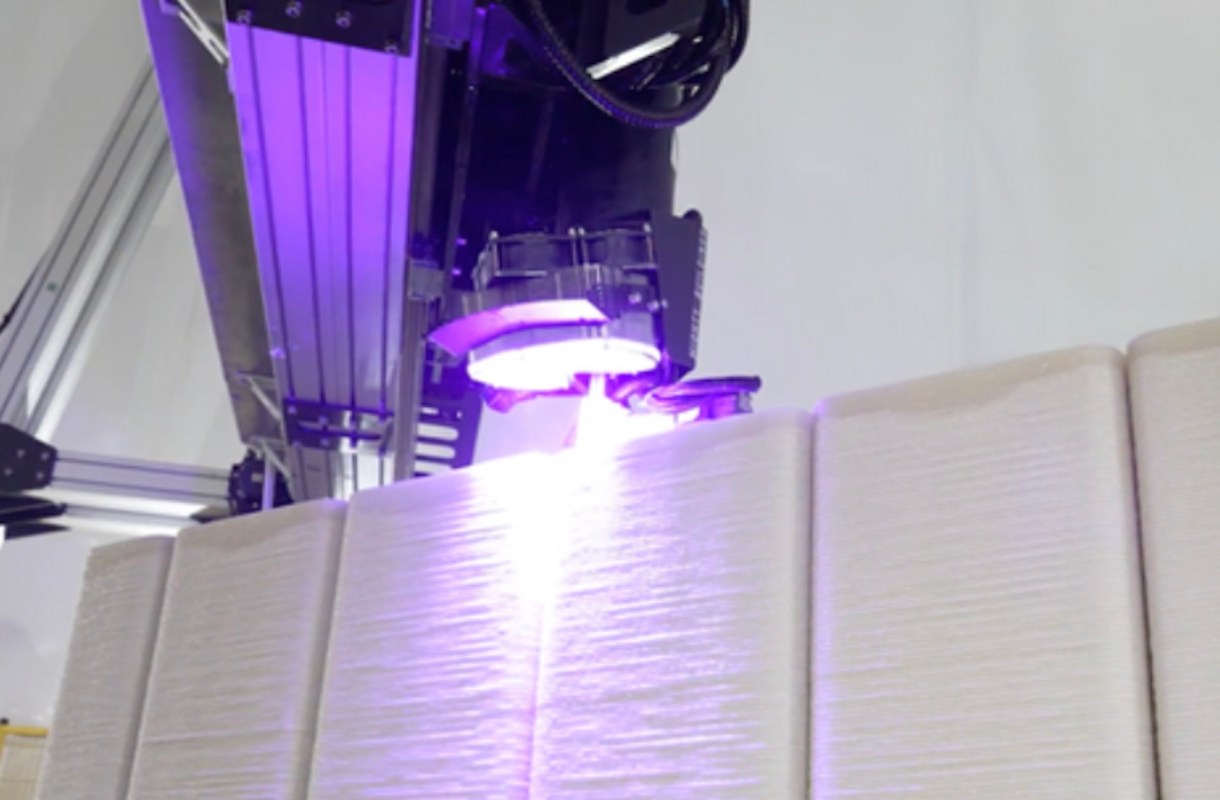The keystroke "cmd + print" is producing an unlikely result around the country: an explosion in the appearance of 3D-printed homes.
And while the startup sequence is likely a little more involved than pushing a few buttons, the process in fact involves giant printers that put down layers of concrete mixture — that form home exteriors — with speed and precision.
Forbes and other news agencies are reporting on the trend, which includes neighborhoods of printed homes popping up in numerous states. Proponents of the tech see it as a faster, cheaper, and cleaner way to build houses, according to the Forbes report.
"I see 3D printing as a transformational disruptive technology," Basil Starr, founder of Beverly Hills-based Palari Group — the developer of a 3D community in Desert Hot Springs, California — said in the news story. These dwellings can be constructed in about half the time as a traditional build, per the report.
What is a 3D-printed home?
Though the technology and details vary by developer, the concept is fairly constant.
High-tech, automated, and pre-programmed machines jet out layers of a concrete building slurry that hardens to form a home's exterior. The printers, like a 20-foot-tall one used by California's Mighty Buildings, are large.
Why is this important news?
Building our homes and facilities is dirty work. In the United States, about 40% of air pollution comes from building construction and daily heating, cooling, and lighting, according to the American Institute of Architects.
3D tech is one solution as we develop better ways to build. A Singapore study from 2020 found that a 3D bathroom produced nearly 86% less air pollution than one made with regular methods, according to ScienceDirect.
"It's about having a better process for how we build our homes," Evelyn Woodman, co-founder of Citizen Robotics, told the Detroit Free Press. The nonprofit finished Michigan's first 3D home earlier this year.
How will the tech impact me?
If you are planning to build a home the traditional way, it will cost an average of $329,000, not including the land, per Forbes. The process will also contribute to the industry's major air pollution tally.
The homes come in a variety of sizes and stories, offering all the modern amenities. Many seem to have flat roofs and chic interior design concepts, though styles vary.
"We can typically do it quicker than a normal concrete or stick-built home would be," Mannheimer told the Free Press. "We can do it with less labor. We can do it with less expensive material, and the material that we're using tends to be more sustainable. It's stronger than traditional concrete by at least two or three times, which means it can stand up to most major storms. It doesn't burn."
Even if you aren't in the market, you might notice this tech at work in a nearby community soon. In addition to Michigan, printers are making homes in a growing number of states:
- In California, Mighty Buildings is pumping out house exteriors in Desert Hot Springs and Rancho Mirage. The company's printers use 60% recycled composite stone. That is of note, as critics referenced by CNN question the use of concrete in 3D builds, citing air pollution.
- Texas is home to the world's largest 3D community, planned for 100 dwellings, per CNN. There are 46-foot-wide printers at work on walls on the site. To maximize sustainability, the homes have solar panels. The 1,500-square-foot to 2,100-square-foot homes with three or four bedrooms can be listed for nearly $600,000, according to CNN.
- On the East Coast, the first 3D home in Richmond, Virginia, was printed in 2022. The exterior of the three-bedroom, two-bath house was printed in about 15 hours with "less labor and ... materials" than lumber builds, according to TV station 12 On Your Side. The project was made possible in part by a $500,000 grant from Virginia Housing.
- A company in Japan might make the tech accessible to most people everywhere — if it travels overseas. Serendix uses 3D printers and CNC machining to create homes for under $40,000. They might not be for everyone, as one model is less than 600 square feet, Fast Company reports. It looks like a dwelling from Star Wars.
What's next?
While more 3D neighborhoods are likely on the way, ICON (the company working on the Texas community) CEO Jason Ballard told CNN that the tech could also be a solution to homelessness, as well as a way to provide sanctuary after disasters.
The CNN report notes that 3D building codes have yet to be "widely adopted," a benchmark that will earn confidence for the tech's strength and stability.
"3D printing is not science fiction," Ballard said to the news agency. "In the future, our bet is that this will be humanity's best hope for a housing solution that matches our highest values and ideals."
Join our free newsletter for weekly updates on the coolest innovations improving our lives and saving our planet.









